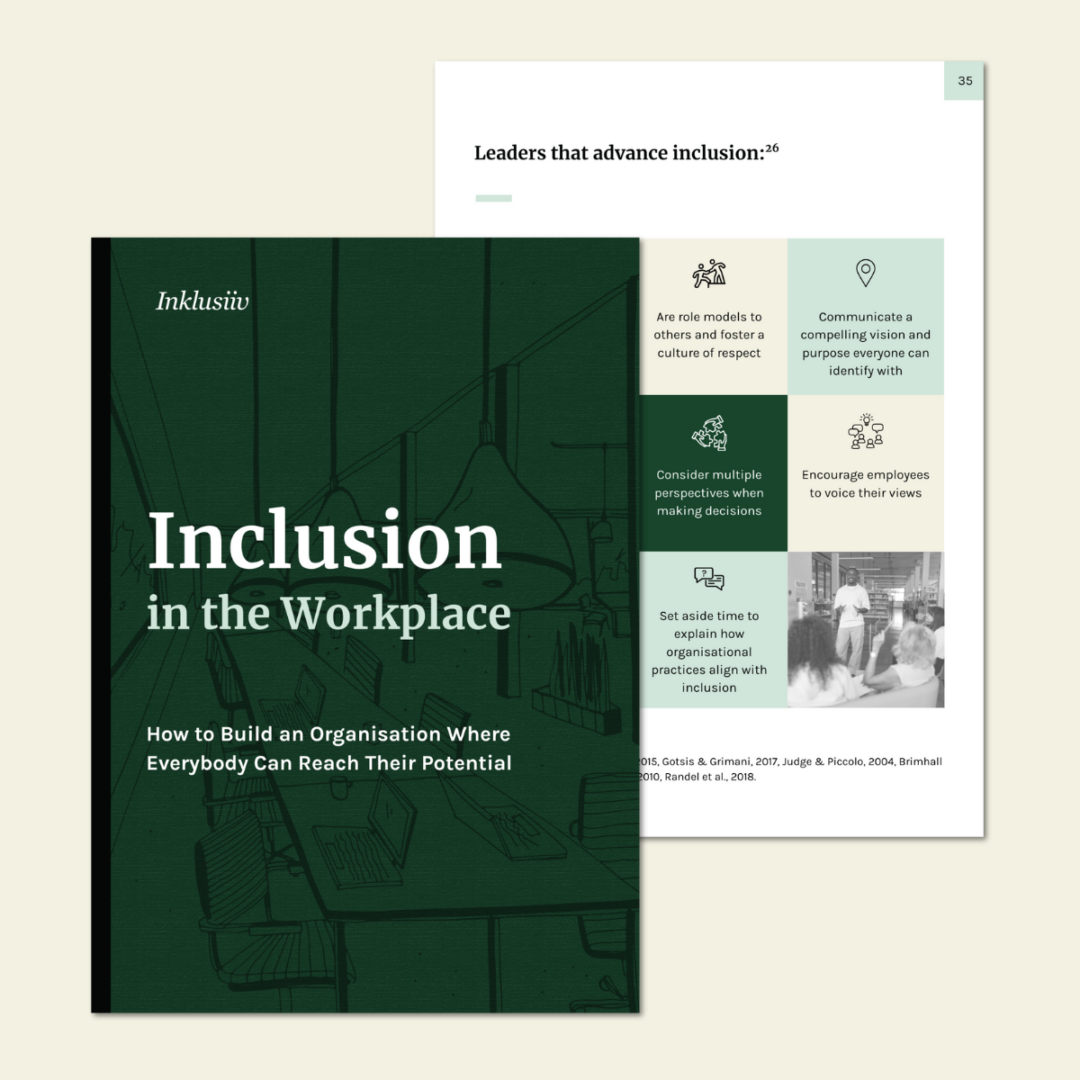
Inclusion in the Workplace
How to Build an Organization Where Everybody Belongs
In today’s workplaces, the concept of inclusion is often mentioned, but it is not always fully understood – or experienced.
It is time to shed more light on inclusion: what it is and is not, how employees experience it, and how organisations can foster it.
This white paper explores what creates a sense of inclusion in the workplace and how everyone, from strategy-makers to team leaders and employees, can make it happen.
The white paper is available in both English and Finnish.
About this Research
This paper draws from our multidisciplinary literature review of nearly 100 peer-reviewed journal articles and book chapters on workplace inclusion, alongside insights from our work with organizations and leaders across sectors.
Why Inclusion Matters in the Workplace
Inclusion benefits everyone. It leads to better business results. It’s an essential component in healthy workplaces where people feel good and perform to their full potential. Organisations benefit from empowering their employees to contribute fully as their authentic professional selves. We see this reflected in higher levels of engagement, retention, wellbeing and innovation.
“When every individual in the workplace feels accepted, valued, and recognized for who they are as individuals and professionals, the values of diversity, equity, and inclusion become much easier to embrace and act upon. Inclusion isn’t just a box to check. It’s the foundation that allows diversity to thrive.”
– Katja Toropainen, Founder & CEO of Inklusiiv, for Forbes
What We Mean When We Talk About Inclusion
At its core, inclusion in the workplace is about meeting our social needs.

I am recognised for who I am as a person and a professional

I am appreciated without having to hide aspects of myself

I feel connected to my colleagues through meaningful relationships, mutual support and a clear role that contributes to the organisation’s mission
How Employees Experience Workplace Inclusion
In the workplace, inclusion is created on different levels:
Individual
Inclusion is based on the psychological motives of belonging, uniqueness, and acceptance. People want to feel that they belong in groups or organisations where they spend much of their time, without feeling that they need to hide or sacrifice who they are.
Inclusion stems from positive interactions, especially between managers and employees. A shared understanding of the organisation’s goals and of one’s role in achieving them can create a positive dynamic where experiences of inclusion further strengthen this understanding.
Relational
Collective
Inclusion arises from the organisation’s so-called “inclusion climate”, or how employees perceive its genuine efforts to foster inclusion. External cultural values and societal norms can either support or hinder the organisation’s inclusion efforts.
How to Foster Inclusion in Practice
Fostering workplace inclusion starts with strategy. Organisations must first understand what inclusion is and how it relates to their values, culture, sustainability commitments and business goals. In an inclusive organisation, there is clarity and consensus as to what the values and norms are, and how inclusion efforts are actively supported.
Actions to Promote Workplace Inclusion
- Establish inclusive practices in hiring, promotion, and development
- Communicate and ask for feedback
- Follow universal design
- Equip leaders to create inclusive teams
